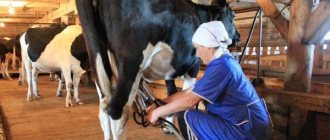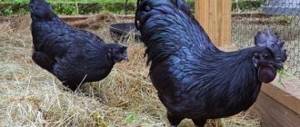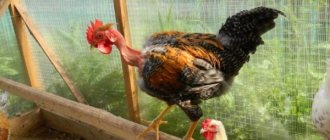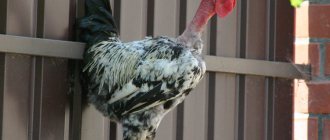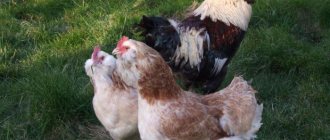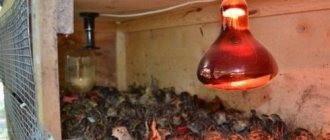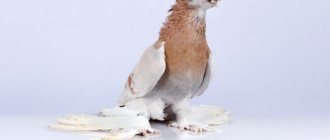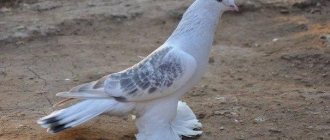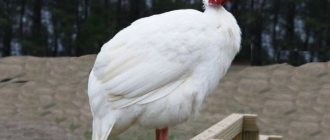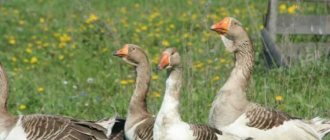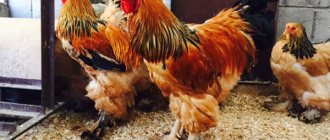Description
Birds of this breed should be classified as egg breeders in light of their high egg production. Chicken selection was carried out in Ukraine. The place of work determined the name, which was assigned to the birds, since they were bred in the village of Borki, Kharkov region. The main nuances that the breeders worked on were indicators of resistance to various climatic conditions, as well as the fastest possible adaptation to them. Several types of Leghorns were used to develop the breed.
Ukrainian chickens are distinguished by unique characteristics regarding appearance. The Borkovsky barwy will have bright and catchy plumage, which eliminates the possibility of confusing it with other birds. The color of chickens and roosters is predominantly silver, and black and white feathers are also allowed.
Laying hens are able to lay eggs all year round without interruption for the winter. This breed can be kept not only in chicken coops, but also in cages. Despite the fact that the barwy is positioned as a breed with high egg production, these birds are often raised for meat products. This is due to the high taste qualities of dietary meat, which is famous for its chemical composition.
As a rule, birds are able to lay eggs at 4–5 months; the breed’s egg production is about 270 eggs per year.
However, after 24 months, the birds' productivity will begin to decline. This point must be taken into account by the breeder in order to promptly update the herd to obtain meat and egg products.
The exterior of the Borkovsky barvisa is generally similar to the characteristics of egg-laying birds. Their skeleton is not large. The body of laying hens will be slightly smaller than average in size; the chest and legs do not protrude forward, as in meat breeds. In chickens and roosters, the paws are well developed and set straight. The metatarsus are without feathers, their color is predominantly yellow, the beak is straight.
The head is small, with a leaf-shaped crest on it, and red-pink earrings in the chin area. The plumage is dense and hard with down underneath. There are braids on the rooster's tail. The color of Borkovskaya Barvistaya chickens can be as follows:
Since the birds were bred to produce eggs, their mass does not stand out for its high values. As a rule, a rooster will weigh about 2.5 kg; laying hens are 400–500 g smaller than males. Laying hens have a fairly docile disposition; they behave calmly when walking. The Borkovsky barwy will not become a source of quarrels and conflicts on a farm or in a private household; usually individuals of this breed coexist peacefully with other birds. However, the breeder should be prepared for the fact that both male and female birds have a strong voice, so they can make a lot of noise.
Every year there will be a molt, during which the old plumage will be replaced with new ones. In most cases, this process occurs in summer, winter and autumn. At this time, laying hens usually experience reduced productivity. However, in individuals that will be raised in cramped conditions - in cages - egg production remains at almost the same level as in normal times.
Hens can live 5–7 years; males are usually slaughtered at 7–8 months, since later the roosters are no longer able to adequately fertilize the hens.
With proper care and good conditions, birds rarely suffer from any ailments. However, mistakes regarding diet can lead to serious health problems for laying hens.
Most often, barvy suffers from vitamin deficiency, so special complex supplements should be offered to laying hens.
Breed characteristics
This bird belongs to the egg breeds. Laying hens can continuously produce eggs even without winter breaks. Borkovskaya can be grown not only in chicken coops, but also in cage conditions.
But you should not think that the meat products of this bird are the same as those of most other laying hens (only for making broths). Barvista's meat is quite tasty and juicy.
The breed begins to lay eggs quite early. Chickens mature at approximately 4-5 months. Egg production reaches 270 eggs per year, naturally, in ideal conditions. Typically, chickens at home produce about 230-250 eggs per year.
2 years after the start of egg production, the productivity of laying hens drops significantly. Usually during this period, poultry farmers update their flock.
The exterior of the Borkovskaya Barvista is similar to the characteristics of other egg birds. The bones of chickens are not large, the body is smaller than that of representatives of meat-egg breeds. The chest is poorly developed and does not protrude forward.
At the same time, the paws are quite massive and straight. The metatarsus have no feathering, a yellow tint, and the beak is straight.
The bird's head is small, with a leaf-shaped crest on top and earrings of a red-pink hue.
The bird's plumage is quite dense. The color of chickens of this breed can be white, red, speckled or brown.
Since this is an egg breed, it cannot boast of large dimensions. Usually an adult rooster weighs no more than 2.5 kg, hens are 0.5 kg lighter.
Every year the bird molts. Shedding usually occurs in summer, winter and autumn. During this period, Borkovskaya laying hens experience a decrease in productivity. However, if poultry is raised in cage conditions, no significant changes occur.
The average life expectancy of chickens is 5-7 years.
Character
Chickens of this breed have a fairly calm character. They do not provoke conflict situations and are also rarely provoked by outsiders. Borkovskaya Barvistaya gets along well with both its own kind and other members of the household.
However, when breeding this breed, you need to know that Barvistaya is a rather vocal bird that creates a lot of noise.
Advantages and disadvantages
A breeder planning to keep a bird of this breed should take into account its strengths and weaknesses. The advantages are as follows:
- chickens stand out among other breeds for their egg production;
- barvy very quickly gets used to a new place and conditions, which facilitates the adaptation process and eliminates problems with productivity;
- birds are immune to most diseases;
- chickens and roosters can live quite a long time;
- care and maintenance of this breed do not require the breeder to create any specific conditions;
- It is worth highlighting the good quality of feathers and down of the Bark bird, they can be used for making bedding;
- chickens enter the maturity phase early.
Among the weaknesses it should be noted:
- since the breed is still focused on producing eggs, the meat yield from one carcass will be low;
- The birds are quite noisy when kept.
Content Rules
To grow Borkovsky barvista, you will need to provide the bird with the following conditions:
- aviary for walking;
- chicken coop;
- perches and nests;
- feeders and drinkers.
Chicken coop
Due to the fact that the birds can fly, the breeder will be able to save space when building a chicken coop for this breed of laying hen. Typically, perches for chickens are made at a height of 0.8 m and above in several rows. Birds have strong limbs, so there is no risk of injury when flying from their perches. The optimal area to accommodate one individual will be 1 m2. It is better to place places for birds in the far warm corner away from window openings, where there are no drafts.
Additional nests are provided for laying hens. It will be possible to calculate their number on the basis that 2 birds will need 1 nest, since the entire population will not lay eggs at once. Since the productivity of the breed is very high, the nests should be equipped with a special collection for the products.
Despite the good plumage, it is still recommended to insulate the bird keeping room. This is especially necessary if laying hens are kept in climatic conditions characterized by significant temperature drops in winter. It is recommended to lay flooring on the floor, as well as place baths with ash or sand for bathing chickens.
The breed will produce eggs all year round, including winter, if the coop is provided with good lighting during these months.
The optimal length of daylight for masonry will be 10–14 hours. It is best to use LED lighting devices for these purposes, which will not irritate the birds’ visual organs. The room should also be equipped with loopholes for the free movement of birds to and from the yard.
Maintenance and care
Borkovsky colored ones are undemanding. Even a novice poultry farmer can keep this breed.
To maintain them you will need:
Chicken coop
Before raising chickens, you need to build a chicken coop. If there is an old building, then repair it.
When building a chicken coop, you need to know the exact number of chickens in order to correctly calculate the size of the room. It is easy to calculate the required dimensions. One chicken will require an area of one square meter, respectively, 10 birds will need an area of 2x2, and 20 will need 3x3, and so on.
It is best to cost a chicken coop made of wood; it is an easily accessible and cheap material.
It is necessary to take into account that if you are going to keep chickens for a whole year, then you need to insulate the chicken coop. Walls, floors, and roofs should be insulated. It is better to install double windows immediately. It is also worth taking care of high-quality ventilation so that there is always fresh air in the room.
The poultry farmer must choose high-quality lighting. Lighting with LED lamps is best suited for the Borkowski breed. The light of these lamps is well perceived by the chicken and does not irritate it.
Be sure to install openings for your hens to access the yard.
Having equipped a chicken coop, it is worth taking care of the birds’ overnight roost; for this it is necessary to install perches.
Perches are divided into the following types:
- Perches. They are placed at an angle along the wall. From a hygienic point of view, this option has disadvantages - conflicts occur between birds for space, because those on top dirty those resting below.
- Bars. This type allows you to place birds at the same height around the entire perimeter. As a result, the chicken becomes calm and non-conflict.
- Hygienic perch. Includes a moving structure consisting of a table and perches. The advantage of such a perch is easy cleaning.
It is necessary to install the perch away from windows; the ideal option would be a dark and warm part of the chicken coop. The height of the sleeping places is selected based on the size of the bird.
To lay eggs, nests must be installed. The number of nests is determined simply. For two hens, one nest is needed, since all the birds will not lay eggs at once. For the Borkovsky Colored breed, it is best to purchase or build yourself a nest with a collection for eggs, since this breed is an egg breed.
Bedding is laid to avoid infectious diseases, joint problems, and increased mortality of birds in winter.
There are two types of bedding:
It is not recommended to use hay with straw, as they quickly absorb moisture, causing mold or mites to appear.
The thickness of the litter should be from 10–15 cm. With the arrival of winter, it is necessary to loosen and mix the litter with droppings, raising the layer of litter to twenty-five centimeters.
Walking yard
A walking yard is necessary for the free movement of chickens on its territory. Having the opportunity to graze in the fresh air, the bird receives many vitamins and nutrients that affect the productivity and vital functions of birds.
Feeders and drinkers
Rational and timely nutrition is the key to the health and productivity of Borkovsky Colored chicken. Drinkers and feeders come in different types and shapes. They need to be placed in such a way that the bird has free access to water and food.
Also, when choosing a feeder, it is worth considering the fact that chickens like to rummage not only in the sand, but also in the feed. Therefore, it is best to install a bunker feeder.
You can choose the drinking bowl at your discretion.
They are divided into types according to the water supply mechanism:
- vacuum;
- automatic;
- nipple;
- simple.
Breeding
Chickens have a well-developed maternal instinct, so they willingly lay eggs and hatch eggs. The breeder does not need to buy an incubator to update the number of chickens on the farm. The breed also stands out for its high survival rate of young animals, which is about 95%. Birds take care of their offspring. There are usually 10 hens per rooster.
Chicks are born weighing about 40–50 g, and their plumage will be gray in color. In the first weeks of life, determining the sex of young animals will be quite problematic. Chickens do not develop as quickly as meat breeds, but after 2–3 months the young animals are already actively interacting with other birds. As a rule, after a couple of months, hens and roosters will be fully feathered and their sex can be determined.
In the first days of life, young animals are fed with crushed yolk at intervals of 2–3 hours. Greens and grains are gradually being introduced into the menu. It is important that the food is crumbly to avoid clogging the beak.
Grown-up chickens are fed vegetables and dairy products. Two-month-old young animals can be switched to adult bird food.
Reviews
Among the characteristics of the breed, breeders highlight their frost resistance, as well as the high productivity of laying hens. Chickens lay large eggs with a strong shell. The popularity of Borkovsky barvysta, according to reviews from farmers, is also due to its unpretentiousness in care and the absence of the need to purchase any specialized feed. However, birds provide small amounts of meat.
To learn about the characteristics of the Borkovskaya Barvistaya chicken breed, see the following video.
About the breed of chickens Borkovskaya Barvistaya
The Borkovsky barvy breed of chickens, distinguished by decent egg production, was bred relatively recently. But it has already become popular among poultry farmers due to its unpretentiousness, endurance and pickiness in feed. The main goal of the scientists who selected this chicken variety was to create a new bird capable of adapting to changing climatic conditions. Breeding Leghorn chicken was used as the starting material.
Historical reference
The very rare and little-known Borkovskaya breed was bred in Ukraine in the village of Borki, Kharkov region in 2005. The breed was bred taking into account the fact that the birds will adapt well to any climatic conditions.
The breed can be considered a hybrid because its genetic material was crossed with the Italian Leghorn breed. The big advantage of Borkovskaya Barvista is its high egg production. In the village where the Borkovsky breed was bred, other chicken breeds are also bred, such as Hercules and Poltava.
Did you know? Borkovskaya color also has the name
"
barvy
"
from the Ukrainian word "barva".
Reasons for breeding a new species
Breeders working on breeding chickens strive to improve their abilities and characteristics.
The climate has been subject to serious changes in recent years, which has an impact on the poultry industry. It was climate instability that became the main reason why Ukrainian scientists began work on breeding a new chicken species.
To obtain the Borkov breed of chickens, representatives of the Leghorn breed with all available colors were used. You can learn about plumage colors and other features of this variety in the article “About Leghorn chickens: characteristics of the breed.”
Work on the creation of a new breed of chickens was carried out on the territory of Ukraine, in the Kharkov region. It was officially presented and registered in 2005.
It is noteworthy that the Borkovskaya Barvysta breed of chickens (according to some sources it is called the Barkovskaya Barvysta) was recognized as a breed that is easy to breed without reducing its genetic capabilities.
Based on productivity, the chicken was assigned the egg type.
Characteristic behavior
The description of the Borkovsky barvy breed of chickens should begin with the fact that this is an ideal option for private owners. Chickens are distinguished by their rare intelligence and intelligence, and are calm and accommodating in nature. They do not have a tendency to conflict; they perceive the presence of chickens of other species without problems.
True, there is a distinctive feature - Borkovsky chickens love to create noise. The cockerels sing loudly, and the laying hens echo them with incessant cackling. During the period of walking around the yard, the herd is able to behave silently only at the time of feeding.
External signs
The chicken has an attractive appearance, characteristic of a “simple laying hen” from the village, which is not characterized by elegance and luxury.
The body of chickens is distinguished by a dense constitution. The head is small in size, yellowish strong beak, tail of medium length. In roosters, it is distinguished by lush plumage, decorated with black rings. The comb is bright pink, represented by a leaf form, less often – rose-like. The skin is yellowish.
The chicken looks impressive: the body is a grayish cuckoo color with white feathers on the breast, the back is flat, the neck is short, the wings fit tightly to the body. Among the colors there are white, red and brown shades.
Appearance
Representatives of the breed are not impressive in size. These are small chickens weighing 2.1 kg, the average weight of a rooster is 2.7 kg.
The main breed standards include:
- Head. The bird is small, has a red face, and orange eyes.
- Beak. Slightly curved, grayish with a yellow tint.
- Crest. Bright red color (pinkish tint is allowed) and leaf-shaped. Males have up to 8 long teeth on it, while females have them of a more modest size.
- Body. Thin boned, strong. The skin is yellowish. The back is flat. A rooster's belly is tucked up, its chest is like a wheel; in laying hens, the belly is well developed.
- Wings. Small, well pressed to the body. The feathers are hard and dense, there is little fluff.
- Tail. Set on high, long and bushy. Dark spots are visible on the tail feathers.
- Paws . The paws are of average length, they are yellow without feathers.
This breed is characterized by a cuckoo coloration. Females and males can be distinguished already at a young age. Chickens are characterized by a darker color.
However, the color becomes lighter towards the bottom. In many representatives, the feathers on the belly may be white, but feathers with a light red tint are also allowed. Now you can find Barkov chickens with white, red or red coloring.
To obtain offspring do not use:
- roosters with a solid collar,
- with a small comb and earrings.
Standard requirements and rejection
The weight of a rooster reaches 2.7 kg, a chicken – 2.1 kg. The bird is distinguished by a thin neck, an elongated body with a flat back, a developed and full belly (in chickens), and a muscular, protruding chest (in roosters).
Laying hens' thighs and drumsticks are relatively small, the chest is inexpressive, which is a characteristic difference between breeds raised for eggs.
Chickens with a non-standard or too dark color, disproportionate or heavy, meaty body, or high-set tail are not allowed for breeding and are rejected.
If there are too many cockerels among the chickens, then the most aggressive ones are separated and fed until they are one year old for meat, leaving one leader for every ten hens.
Description and characteristics of the breed
Borkovskaya Barvistaya is a young breed of chickens registered in 2005. The breed was bred by breeders of the Ukrainian Institute of Poultry Science, National Academy of Sciences. The goal was to create a productive laying hen that would maintain the stability of the clutch, regardless of environmental conditions. The Leghorn breed of egg-laying chickens was taken as the basis.
Appearance
If you have papillomas, read - before they are removed! This gets rid of parasites in 2 days and forever...
Read more…
The body of Borkovskaya barvistaya chickens is light and has an elongated shape. The hips and abdomen are poorly developed, the chest protrudes forward. The back is straight, the tail is bushy, the legs are long. The wings are strong, tightly pressed to the body.
The earrings are small and, like the comb, can be red or pink in color. The comb is large, leaf-shaped. In chickens, the comb sometimes hangs to one side under its own weight. The beak is characterized by a curved tip. The legs and beak are colored yellow-gray.
The plumage is dense and quite rigid. The most common color is “cuckoo”: silver-white feathers decorated with a black-gray border. The feathers on the chest and belly are white, without a dark stripe. Birds can also be brown or red in color.
Puberty and egg production
As a rule, young hens lay their first egg at the age of 4.5-5 months, but some begin to lay eggs only at 6 months.
Over the course of a year, the Borkovskaya barvista laying hen produces from 250 to 270 eggs, while in winter its productivity does not decrease at all or decreases slightly. Birds show the highest egg production during the first 2 years of laying. The subsequent decrease in clutch intensity occurs slowly, so chickens are usually kept for 4 years.
The average weight of eggs is 55 grams; depending on the age of the hen, it can range from 50 to 60 grams. Less commonly, but according to poultry farmers, the egg weight of Borkovskaya barvista reaches 63-65 grams. The shell is white or pale cream.
Meat productivity
The breed cannot be classified as a meat breed: the weight of a rooster is no more than 2.5-2.7 kg, the weight of a chicken is 1.7-2.1 kg. But the birds have tasty meat, so some farmers keep them for their carcasses. To increase the volume of the product, Borkovsky barvises are often crossed with meat chickens. Hybrids obtained from a mixture with chickens of the Roy Island and Poltava Glinistaya breeds have proven themselves well - with a larger volume of live weight, the offspring retain the delicious taste of meat.
It is advisable to slaughter roosters with Borkovsky barvisa at the age of one year, when the birds have already gained maximum weight, but their meat has not yet become tough.
Character of birds
By nature, chickens are peaceful, not prone to conflicts, and get along well in the same space with other inhabitants of the poultry yard. Poultry farmers note the intelligence of chickens. Both roosters and hens are noisy, vocal, and only fall silent when eating. The roosters are singing beautifully. Birds quickly get used to people and calmly allow themselves to be picked up.
Advantages and disadvantages
Poultry farmers value Borkovskaya Barvistaya chickens for qualities such as:
- high egg productivity;
- hen instinct;
- high survival rate of young animals;
- good immunity;
- possibility of keeping in any climate;
- unpretentiousness;
- non-conflict;
- the ability to distinguish chickens by sex at an early age.
Among the disadvantages of birds it is worth writing down:
- lower productivity than some egg crosses;
- not large egg size;
- tendency to make a lot of noise.
Puberty and egg production
After five months, Borkovsky chickens reach sexual maturity. By this time, barby laying hens begin to lay their first eggs. This sets them apart from other egg-type breeds.
With proper care, the laying hen will show excellent results for four years, laying from 250 to 270 eggs each year. It is worth noting that this performance can be increased by 14 hours of daylight and a diet rich in protein and calcium.
Positive and negative qualities
The Borkovskaya chicken breed is distinguished by excellent productivity. Birds tolerate severe frosts without problems. They are characterized by a calm disposition, resistance to disease and lack of increased demands on the environment. Females show good maternal qualities.
The Borkovsky barvy breed enjoys well-deserved popularity among owners of small farms.
Unfortunately, Borkovsky chickens are somewhat inferior in productivity to modern breeds, but this is their only drawback. When choosing a breed, it is recommended to take into account its characteristics, but this is not an obstacle to breeding.
In addition, poultry farmers have noticed several minor inconveniences in Borkovskaya barvistaya chickens:
- egg size is medium;
- chickens are prone to flight;
- noisy behavior.
Advantages and disadvantages
Among the advantages of Barvista chickens are their high productivity, resistance to frost, calm disposition, good maternal qualities of females, resistance to diseases and undemanding living conditions.
Advantages and disadvantages of the breed
Compared to other egg-laying breeds, the Borkovskaya Barvistaya is still slightly behind in productivity. This is their only drawback, which is pointed out by poultry farmers with experience in breeding these chickens. There are no serious problems in breeding, but the choice of this breed must be made taking into account its characteristics.
Video - Opinion about the Borkovskaya Barvista breed
Features of care and maintenance
Adaptive abilities
Chickens of the Borkovsky barvy breed perfectly adapt to the climate, which allows them to be raised in almost any region.
An important feature of chickens is that it is better to place the place for walking in an area that is rarely visited by people, so that excessive attention does not cause stress in the birds. Otherwise, this will negatively affect the productivity of Borovsk laying hens.
Borkovsky barvy chickens are considered an unpretentious breed, but to improve their productivity you will have to comply with certain requirements.
How to equip a room
The poultry house for Borkov barvy chickens is set up in a barn or any outbuilding. The number of birds is determined so that they can live comfortably in the chicken coop: for 2-3 birds - 1 square meter.
The floors in the chicken coop are covered with bedding, which is updated regularly. This measure helps prevent the development of infection. It is best to equip a multi-level roost.
Nests are arranged at the rate of one for 2-3 hens. Recommended dimensions: width – 25 cm, depth – 30–35 cm, height – 30–35.
The construction of an egg cell is one of the necessary conditions. In addition, feeders and drinking bowls are provided.
Insulating the chicken coop
Borkovsky barvy breed chickens are known for their resistance to cold winters. However, to maintain their productivity, drafts must be eliminated in the chicken coop, and the room must be insulated.
Heating the chicken coop will not be required if the temperature in it does not fall below 5 degrees Celsius.
Organization of walking
Cleanliness and space are two main components of a comfortable home for chickens. A large area is allocated for walking, which can be used even in winter.
A canopy or other shelter must be provided so that the chicken family has the opportunity to hide from bad weather.
Please note that Borkovsky barvy breed chickens are prone to flight, so the walking area must have a fence of at least two meters to prevent the laying hens from flying away.
Molting and break in egg laying
In the middle of the autumn season, Borkovsky barvy chickens begin to molt. During this time, the plumage changes, which greatly facilitates the wintering process.
If for certain reasons the bird does not begin to molt on its own during the specified period, then the process must be induced artificially. For example, reduce daylight hours by 3-4 hours, reduce the amount of food (plenty of water should be given), use veterinary medications: Thyroxine, Progesterone - strictly according to the instructions.
According to experts, molting will help chickens prepare for winter and improve their productivity. This period is the only one during which the chicken practically stops laying eggs.
Conditions and care of birds
Chickens of the Borkovskaya Barvistaya breed are unpretentious, but like other birds, egg production and health depend on maintenance and care.
For good productivity and strong immunity, birds need a spacious, warm home and a place to roam.
Chicken coop
The chicken coop is set up at the rate of half a square meter per chicken. The perches are arranged in 4-5 tiers. To prevent productivity from falling in winter, install additional lighting and insulate the home. It is important to protect your chickens from drafts, while at the same time ensuring adequate ventilation.
Walking yard
The area for bird walking is fenced with a fence of at least two meters high or covered with a net, since Borkovsky barvises like to fly over the fence. A canopy is provided in the courtyard to protect from the scorching sun and precipitation, and drinking bowls and daytime feeders are placed.
Feeders and drinkers
Chickens constantly rake up food with their feet, so feeders are designed in such a way that only their heads can fit inside. Drinkers must always contain a sufficient amount of clean water, this is especially important during the hot season. During the day, water is added or changed as it gets dirty.
Seasonal molt
Chickens usually begin to moult in the fall and stop laying eggs. Molting lasts approximately two months. Sometimes molting is forced in order to shorten its time and at the same time improve the health of the poultry house population.
Planned herd replacement
Egg production begins to gradually decline after the Borkovskaya chicken reaches the age of 2 years. For this reason, old laying hens are gradually being replaced by young ones. It is not advisable to keep chickens over 4 years old in the flock.
See also
Characteristics and description of the Foxy Chick chicken breed, rules of keeping and breedingRead
Catering for adult chickens
Basic Rules
From the very beginning, the diet has a major influence on the development and growth of Borkovsky barvy breed chickens.
The chicken does not have teeth, so for the normal digestive process it needs small pebbles that help in grinding the food that enters the stomach.
It is best to equip the place intended for feeding with a separate container into which grated shells or chalk are poured. Near the chicken feeders there are drinking bowls filled with clean water, since chickens need a lot of moisture, especially in the hot summer.
When feeding Borkovsky barvy chickens, you must adhere to a diet suitable for egg-laying chicken breeds.
Diet
The best option is considered to be special combined feeds intended for egg breeds. It is with their help that the maximum productivity of laying hens is achieved.
But chickens of the Borkovskaya barvystaya breed also make do with cheaper feed - boiled potatoes, to which are added greens and grated vegetables, and grain mixtures.
It is recommended to add fish or meat and bone meal to the feed in small quantities (no more than 5% of the total feed). If a bird is planned to be slaughtered, they stop giving it flour a month before the event. Otherwise, the taste of the meat will be spoiled.
Grain is the basis of the diet of adult Borkov barvy chickens at any time of the year. With the onset of the spring-summer period, it is allowed to reduce the grain mass slightly, focusing on green feed.
In addition, the grains must be varied, containing in the overall complex everything that is necessary for the normal functioning of the chickens’ body. Ready-made mixtures are suitable for this. You can prepare them yourself using grains of corn, oats, wheat and rye.
Characteristic diseases
It is believed that adult chickens of the Borkovskaya Barvistaya breed have no health problems. But if the requirements for their maintenance and nutrition are violated, the condition of the hens may worsen. This is especially pronounced during the period of most active egg laying.
Borkovsky barvy chickens are distinguished by a strong immune system, capable of coping with various pathogens that attack them.
If the usual conditions of detention are violated and the chickens eat irregularly, they become weaker. Young laying hens at the peak stage of laying can suffer from vitamin deficiency. It is necessary to recognize the disease in a timely manner in order to use drugs added to the feed that are suitable for treatment. For example, ascorbic acid, Trivit.
Diseases of Barvysta Borkovskaya chickens
If birds receive proper care, they will not be susceptible to any diseases. They have good immunity, which allows them to resist harmful bacteria and infections.
Chicken health
If simple maintenance requirements and poor nutrition are violated, the health of laying hens may suffer. During the period of active egg laying, it is especially vulnerable. The lack of nutrients manifests itself in the form of vitamin deficiency. Treatment consists of introducing special drugs into the food.
Possibility of independent breeding
How to breed offspring
A chicken of the Borkovskaya barvy breed can become a good hen and mother, which saves poultry farmers from the need to use an incubator or look for a hen of a different chicken variety.
Even a novice poultry farmer can breed offspring of this breed. In addition, it has been practically proven that due to natural brooding, the survival rate of Borkova barvy breed chickens increases.
It is believed that Borkovsky barvy chicks are distinguished by their extraordinary resilience. Of the entire generation, up to 5% will die if the rules of feeding and care are strictly followed.
Chick weight and sex
The chicks that are born are not large in size - on the first day of life their weight does not exceed 45 g. The bodies are tiny, covered with grayish fluff with white or brown splashes.
In terms of growth, the chicks of the Borkovskaya Barvistaya breed do not differ in speed, but they accumulate mass confidently, quickly fledge and join the adult flock.
Sex separation occurs when it becomes possible to determine the sex of the chicks. Cockerels are pugnacity, and they require more food.
Care in the first days
In order for the offspring of Borkovskaya Barvistaya chickens to grow healthy and strong and to develop normally, it is recommended to create an appropriate diet.
Features and characteristics of Borkovskaya barvistaya chickens
Given the silver-motley color and the fact that the Borkovskaya Barvisa descended from Leghorns, chickens of this breed are sometimes called silver Leghorns. Since the breed is young, some characteristics, such as behavioral ones, may change over time.
What do they look like?
A description of the appearance of birds of the Borkovskaya Barvistaya breed is presented in the table.
| Characteristic | Meaning |
| Female weight | Up to 2.1 kg |
| Male weight | Up to 2.7 kg |
| Body type | Strong |
| Neck | Thin, long |
| Head size | Small |
| Eye color | Orange |
| Beak | Yellowish, strong |
| Crest | Bright red, large, leaf-shaped, with pronounced teeth |
| Color | Motley, silver-black, dark on the back, extending to white or light tan on the chest and belly |
| Legs | Medium length, yellow |
| Wing size | Small |
| Tail | Long, curvy, set high |
Productive Features
Chickens of the Borkovskaya Barvistaya breed lay 250-260 eggs per year. Birds begin to lay eggs early, already at the age of 4 months, and have high productivity up to 2-2.5 years, which is a good indicator for egg-laying breeds. The eggs, with light cream or light brown shells, are not very large, approximately 55 grams. The meat is tender and tasty; by the age of two months, the chicken reaches 1.2 kg.
Temperament
The nature of the birds is peaceful, although some roosters are aggressive. The reason may be that the breed is still young, so the pugnacity of males has not yet been eliminated in the selection process, but work is underway to improve this indicator. The chickens are smart, calm, get used to their owner and get along with other inhabitants of the poultry house. Moderately shy.
See also
Descriptions of the 22 best breeds of dwarf chickens and rules of care at homeRead
Maternal instinct
The maternal instinct in chickens is quite developed, so in households it is possible to breed chickens without an incubator. The hens of this breed are also given eggs from other chickens. The survival rate of offspring in Borkovsky barvises is more than 90%.
Description of the breed and main characteristics
Barvistaya appeared in 2000 - 2005 at a research institute located in the village of Borki, Kharkov region. Its main “ancestors” are Leghorn chickens. Thanks to this gene pool, the bird turned out to be very strong and highly productive. Separately, it should be noted that we are talking about a full-fledged breed, and not a cross, so you can breed such chickens yourself.
Good results are obtained by crossing with other breeds - legends, for example, Rhode Island. In this case, the weight of the bird will become more noticeable, and egg production will increase even more. But what kind of chickens lay blue eggs, what the name of this breed is, and what it looks like, you can find out from the article.
Main characteristics of the breed:
- The weight of chickens is from 1.7 to 2.1 kilograms.
- The weight of cockerels reaches 2.4 - 2.5 kilograms.
- Chickens begin to lay eggs at 4.5 - 5 months.
- In total you can get up to 250 – 270 eggs per year.
- The shell color is pale cream.
- The average weight of one egg is from 55 to 65 grams.
- Chick survival rate is good, ranging from 89 to 93%.
- The survival rate of adults is over 95%.
Young cockerels are usually used for meat. To do this, they are fattened for about seven to eight months and slaughtered (in comparison, chickens of the Brahma breed begin to lay eggs at this age), leaving the strongest and largest for brood (if necessary).
Externally, the breed is distinguished by its compact size and variegated plumage. Like most laying hens, hens are small in size and have light bones. By nature, they are cheerful, rather noisy hens, clean and restless. They can be kept in cage conditions, but maximum productivity will be ensured by enclosure keeping. But this is what the Tsarskoye Selo chicken looks like, and how difficult it is to keep it. This information will help you understand.
The video shows a description of the chicken breed:
The main condition for comfortable growing is ensuring the necessary hygienic requirements. The thickness of the litter should be at least 15 centimeters, and it is very important that it always remains dry. Humidity promotes the spread of fungus and harmful microorganisms, so birds will get sick more often.
The egg production of the Barvista and Livenskaya breeds of chickens does not decrease with the arrival of winter, but only if kept in a heated room. The average temperature should not fall below 12 - 15 degrees Celsius, and regular ventilation, cleaning and disinfection will help keep the room clean.
It is better to keep laying hens in a separate room; it is possible to keep several broods together, but only if the difference in the age of the young does not exceed a month.
Breed productivity
When a poultry farmer is looking for information about the Borkovsky Barvistye chicken breed, what is the peculiarity of proper care and maintenance, he is also interested in the productivity indicator. The interest is explained by the desire to make a profit and recoup the costs incurred.
Borkovsky Barvystye chickens have high survival rate and good egg production.
Borkovsky Barvystyye belongs to the category of egg production, which means it is impossible to obtain meat. Chickens grow small: the record weight of a male is 2.7 kg, a hen is 2.1 kg. With proper feeding, two-month-old chickens can gain weight up to 1.2 kg. Despite the small amount of meat, it is tasty, juicy, and is considered dietary in composition.
Hens begin to lay eggs at 4 months. On average, a female lays 260 eggs per year. Peak egg production begins after 7-8 months, lasts from 2 to 2.5 years, then gradually decreases. Typically, old chickens are slaughtered and replaced with new offspring to maintain profitability.
See also: Detailed description of the Gilyan breed of chickens
Young laying hens have small eggs, their weight is limited to 53 g. One-year-old hens are already capable of laying larger eggs, their weight reaches 59 g, occasionally 65 g. The shell is often light brown, less often cream-colored. The yolk and white have an excellent taste and nutritional value.
